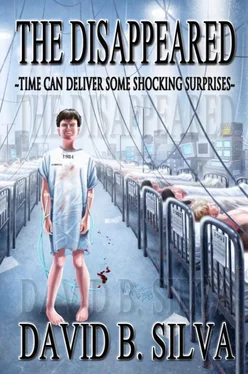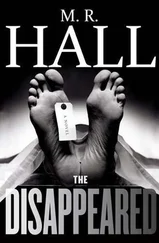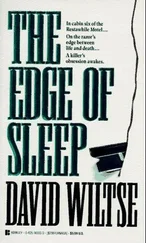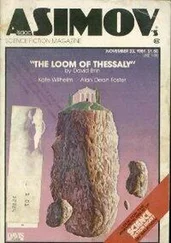The boy displayed no outward acknowledgment, good or bad; he simply stayed on course to the restrooms, with barely a break in stride. The woman stayed to a course of her own. She circled around the perimeter of the park, and rejoined Childs in the bleachers.
What the hell was that all about?
After several minutes, the boy emerged again from the bathroom and stood at the entrance, looking confused. He shaded his eyes against the sun, glancing across the grass to where his friends were still huddled together, talking. And then he did a curious thing. He turned and went the other direction.
That put Walt in a sudden quandary.
He watched the kid disappear behind the foliage at the far side of the park, then glanced at the bleachers and noted that neither Childs nor the woman had budged an inch from where they were sitting. Whatever or who ever they were waiting for, they were still waiting. And that left Walt with a decision. Follow the boy or join the wait.
He cut across the picnic area, around the outer edges of the ball field and slipped out through the wall of oak leaf hydrangea at the far side. The boy was crossing the street half-a-block up. His hands were jammed into the front pockets of his jeans, which were at least four inches too large around the waist and held up by nothing more than a length of rope. His head hung low as he shuffled along in no apparent hurry. He did not appear to be a boy with a mission.
Walt kept a safe distance back.
At the next corner, the boy turned right and continued on his odyssey through the suburban territories. If you followed half-a-dozen regular kids walking down the street, this one would blend in seamlessly, a chameleon with all the right colors, all the right moves. He was invisible if you weren’t looking, reticent if you weren’t listening. He was a thousand other kids, a single faceless child. All of these and none of these.
So what was really going on?
They moved in make-believe tandem three blocks down, two blocks over until the boy stopped outside a small, cubby-hole-of-a-store set back from the street. It was shouldered on one side by a coffee shop called Mimi’s and a Coin-Operated Laundromat on the other. The boy raised his head and read the sign over the store. It read: The Book Mark. New and Used Books. Buy or Trade.
This was where he had come.
He sat on a reading bench outside the bookstore, his hands out of his pockets and clasped behind his head. He crossed his legs in front of him and stretched and stared off into the endless blue dreams of the afternoon sky.
Walt crossed the street and got himself a window table at a place called The Sandwich Shop, where he could keep an eye on things without looking conspicuous. He ordered a slice of lemon meringue pie and a Diet Coke, then sat back and watched.
A few minutes later, a girl, who looked to be a couple of years older than the boy—maybe sixteen or seventeen, it was so hard to tell these days—came down the same street, in the same direction. She was dressed in jeans with holes in the knees and an oversized sweat shirt with the sleeves rolled up above the elbows. Sunlight glistened off a string of four earrings dangling from her left ear.
She stopped and looked up at the sign over the bookstore, the one that said: The Book Mark. As the boy had done before her, she seemed satisfied that she had found her way to the right place. She sat on the bench opposite him, curled protectively into the little space afforded.
As far as Walt could tell, they exchanged not a glance nor a word nor any other form of communication that might indicate they knew each other. They sat like two strangers sharing a park bench out of necessity, neither liking nor disliking the need. And perhaps that was what they were. Two strangers sharing a bench.
It was another fifteen minutes before the third one came along. Walt hadn’t recognized the girl from the park, and he didn’t recognize this second boy, either. The kid sat between the other two, his arms folded defiantly across his chest, his gaze faraway and out of touch.
Walt finished his pie. He wiped his mouth and downed the last of the Diet Coke. This was beginning to get interesting. Three kids, all in their teens, parked on a bench outside a bookstore, waiting. Waiting for what?
Childs, of course. They’re waiting for the good Dr. Childs to come and pick them up and take them back to the Devol Research Institute. That’s what they’re waiting for. Only they don’t know it, do they? That’s what the laying-on of hands and the whispering was all about. It was the Pied Piper piping. And now the children are all in a line, waiting to follow the music wherever it takes them.
He crumpled up his napkin and sat back in the booth. It was only a couple of minutes more before Childs and the woman finally showed up. The good doctor was punctual if nothing else. He pulled up to the curb and without a word, the three kids climbed off the bench and into the back seat of the car. Nothing to it. It was that easy, that quick, that inconspicuous.
Slick was the word that came to Walt’s mind as he watched the car pull out into the street again.
The man was slick.
The empty elevator car, which had been parked on the top floor where all the lab work was being done, started its slow descent toward the basement. It would take several more days before all the test results would be completed. By then, Childs would be back in California. In fact, he had a ticket on the redeye heading out tonight. Pam would be faxing him the prelims as soon as they were available, and if there were any surprises—which he had no reason to expect—then she would express the samples. That had only been necessary once before, when they had first tried AA103. Nothing even remotely as intrusive had been introduced into the study since.
The lab was fully equipped, though it had not always been. Most of the money had poured into the project in the mid-Eighties, after the incident with the AA103. The abrupt comatose states brought about by the experimental drug had initially been thought disastrous. People in the CIA and the DOD were in a panic, fearing that if the project were exposed the entire government might fall. But then an interesting thing had happened. The subjects, while still comatose, had stopped aging. It was the result Childs had been after all along. Only he had stumbled across it accidentally and didn’t clearly understand why or how the natural process had been interrupted. Hence the money came pouring in. Find the answer and everything else would work itself out.
He was still looking for the answer.
The upstairs lab was primarily a biochemistry lab, though there was also a seldom-used bacteriology component. The blood and urine samples were already in testing. Some of the blood had been inserted into a special glass tube, then placed in a centrifuge and spun at a rate of several thousand revolutions per minute, separating the blood cells from the blood serum, which remained at the top of the tube. The serum went into little plastic cups next, then into an automatic analyzer that measured the color by shining lights through the sample plus a reagent solution. Other blood samples were given a flame photometer test for certain elements such as sodium and potassium. The examination of the liver cell samples under an electron microscope would come later.
As the elevator neared the halfway point of its descent, everything was moving along smoothly, all on schedule. The routine examinations on all three subjects had been completed in a little more than forty-five minutes. In addition, Childs had already debriefed and reprogrammed the subjects, which was and always had been the trickiest element of the entire operation. The past five years, they had developed a system of hypnotic and subliminal commands in conjunction with a virtual reality simulator that actually reconstructed a powerful false memory in the minds of the subjects. They had spent the afternoon, the entire afternoon, at the park. That would be their only memory of their afternoon activity. Everything else would be masked. It was a remarkably effective system.
Читать дальше












